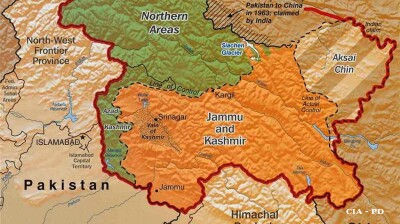Economic growth in Central, Eastern and Southeast Europe (CESEE) is set to accelerate in 2025, despite a challenging global landscape and uncertainties surrounding the return of Donald Trump to the US presidency, according to the latest set of forecasts from the Vienna Institute for International Economic Studies (wiiw).
However, the think-tank warns that this outlook hinges on the assumption that an “unchained” Trump does not impose steep tariffs on the European Union or abruptly cut support to Ukraine. “Donald Trump unchained is the major downside risk,” says wiiw.
Growth in the region’s EU member states is projected to reach an average of 2.8% in 2025, with a slight dip to 2.7% in 2026, wiiw said in its latest winter forecast emailed to bne IntelliNews on February 4. The figure is a small minor downward revision from the think-tank’s previous estimates, but still indicates that the region will continue its economic catch-up process. Emerging Europe is set to grow at nearly twice the rate of the euro area, which is expected to expand by only 1.2% in 2025 and 1.4% in 2026.
“However, this assumes that Trump does not immediately impose high tariffs on the EU and that he does not grant Putin an easy victory in Ukraine by abandoning the country and cutting military and financial aid to it,” said Richard Grieveson, deputy director of wiiw and lead author of the forecast, according to a wiiw press release. “We are assuming this scenario.”
Industrial struggles
Several of the major Central Europea economies in the region – including Czechia, Hungary, Poland and Slovakia – as well as Romania, continue to grapple with headwinds from a prolonged downturn in German manufacturing, a critical driver of industrial demand. However, resilient private consumption, underpinned by robust real wage growth, is expected to sustain economic momentum, says the wiiw report.
“People are spending the additional disposable income, which is boosting the economy,” Grieveson noted.
Across the eastern EU member states, Poland is set to achieve the fastest growth over the next two years, with growth forecast at 3.5% in 2025 and 3.0% in 2026. Croatia follows closely behind, with expected growth rates of 3.1% and 3.0%, respectively.
Meanwhile, the aspiring EU members in the Western Balkans are set to grow by an average of 3.5% annually over the next two years. In the region, Albania, Kosovo and Serbia are set to achieve the fastest growth over the three year horizon, coming in at an average of 4.0% in Kosovo, 3.9% in Albania and 3.7% in Serbia.
Turkey is projected to expand by 3.5% in 2025 and 4.5% in 2026, while Kazakhstan is also among the fastest-growing countries in the broader region, with GDP expected to rise by 4.9% in 2025, easing to 4.5% in each of the following two years.
Assessing the risks from Trump’s second US presidency, Grieveson points to a tariff hike as the main potential impact on the EU, including its eastern members. “While direct trade flows between the region and America are limited, lower US demand for European industrial products and reduced investment could have a severe impact on Central and Eastern Europe,” the report said.
“Since the US has become by far the most important export market for the EU over the past decade, the negative impact of high US tariffs on European goods and services would also be significant for the Eastern European members and would be felt by them relatively soon," commented Grieveson.
Gloomier outlook for Ukraine
The outlook for war-torn Ukraine remains fragile, with wiiw trimming its 2025 growth forecast to 3.0%, down 0.3 percentage points (pp) from its previous projection.
Inflationary pressures have prompted Ukraine’s central bank to tighten monetary policy, raising interest rates to 14.5% – a move that could further dampen economic expansion.
The economy has demonstrated remarkable resilience despite Russia’s ongoing invasion. However, systematic Russian airstrikes on Ukraine’s energy infrastructure and an intensifying labour shortage are constraining growth. Additionally, last summer’s drought has disrupted agricultural exports, leading to higher food prices. Despite these challenges, wiiw anticipates that growth will accelerate to 5.0% in 2026.
This will, however, also hinge on US policy towards Ukraine. “[I]f Donald Trump forces Ukraine into a dictated peace without credible security guarantees and significantly reduces financial and military support, this will cloud the economic outlook and deter investors,” said Olga Pindyuk, a Ukraine expert at wiiw.
There could also be a severe impact far beyond Ukraine’s borders. “If Ukraine were to receive no more help from Washington and be defeated militarily, that would severely damage the image of the West, demoralise and discredit Nato and encourage Putin to test the alliance’s mutual defence clause,” said Grieveson.
“A large wave of refugees from Ukraine to the entire EU would probably be the result, and there would also be the possibility of a sharp rise in global food prices, which could lead to social and political unrest,” according to the economist.
Russia’s economic growth falters
On the other side of the Russia-Ukraine war, wiiw forecasts that Russia’s economic growth is expected to slow significantly after two years of war-driven expansion.
Following growth rates of 3.6% in 2023 and 3.8% in 2024, the country’s GDP is forecast to increase by just 1.8% in 2025 and 1.6% in 2026. A key driver of this slowdown is the Russian central bank’s aggressive monetary tightening, wiiw said. With inflation soaring to 9.5% at the end of 2024, the bank has raised interest rates to 21%, making borrowing prohibitively expensive for businesses and consumers.
“The high interest rates make loans unaffordable for most businesses and consumers and create a strong incentive to hoard money in bank accounts, thus stifling the economy,” said Vasily Astrov, a Russia expert at wiiw.
Further compounding Russia’s economic woes are falling energy revenues, exacerbated by new US sanctions targeting major Russian oil companies and a fleet of tankers that export crude to China and India. While wiiw expects Russia to find ways to circumvent these sanctions, the overall economic impact remains negative.
However, the most significant challenge for Russia’s economy could come when the war in Ukraine eventually ends. Government spending on the military and armaments currently accounts for more than 6% of GDP, an unsustainable level in the long term.
“The Russian economy is now hooked on high government spending for the war – like on a drug. If it is reduced or cancelled one day, it faces a veritable demand shock that could plunge it into a deep crisis,” Astrov said.
Features

Taliban visit to India upsets Pakistan, signals New Delhi's changing Afghan posture
Coinciding with the visit, Pakistan conducted military operations inside Afghanistan, followed by airstrikes on multiple border towns. Retaliation against Pakistan's police training facilities and border outposts followed.

Pakistan’s India-shaped chip on the shoulder, and why a peaceful coexistence is as elusive as ever
Pakistan must first redefine how it sees India - not solely as a threat to be contained but as a neighbour with whom coexistence is unavoidable. That psychological leap has eluded generations of Pakistani leaders.

Trump shocked by China’s move on rare earths, threatens more 100% tariffs
"Some very strange things are happening in China!" Trump wrote in a post on his Truth Social account on October 10, adding "They are becoming very hostile."

Ore wars – and the US dollar’s waning influence
Iron ore underpins almost all modern industrial economies; it is the raw material from which steel is forged, and China remains its dominant consumer.




